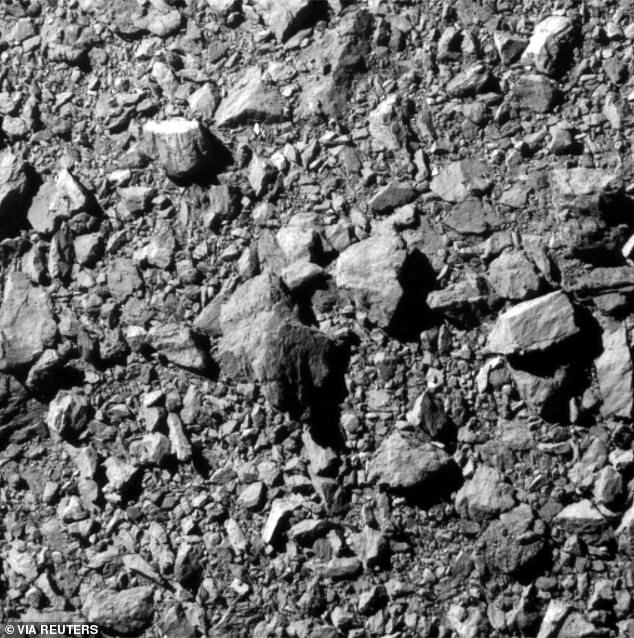Chunks of asteroid from NASA’s deflection test could smash into Earth
A study shows that debris from an asteroid deflected by NASA could reach our planet within a decade.
The research team ran simulations tracking 3 million debris particles from the Double Asteroid Redirection Test (DART) mission, which saw a spacecraft collide with the asteroid Dimorphos in 2022.
NASA launched the mission as a test to deflect a future asteroid that could destroy Earth.
The DART mission was a success, but simulations showed that the remaining debris could one day hit Mars and the Earth-Moon system as meteors.
The asteroid Dimorphos as seen by the DART spacecraft 11 seconds before impact. Scientists are now simulating what might happen to the debris created by the collision.
If these meteors reach Earth, they pose no threat to our planet.
Their small size and high speed cause them to burn up in the atmosphere, creating “a beautiful luminous streak across the sky,” said Eloy Peña-Asensio, a researcher at the Polytechnic Institute of Milan and lead author of the study.
The study appeared online as a preprintmeaning it has not yet been peer-reviewed by other scientists, but has been accepted for publication by The Planetary Science Journal.
DART launched from California in November 2021 and finally completed its 10-month journey when it impacted the asteroid Dimorphos in September 2022.
Dimorphos has a diameter of about 170 meters and orbits a larger asteroid called Didymos. Both planets are located at a distance of about 11 million kilometers from our planet.
DART hit the space rock at a speed of over 22,500 kilometers per hour and was immediately destroyed, while Dimorphos received a “little push” that should change its trajectory slightly.
The mission demonstrated that the kinetic impactor technique, in which a spacecraft is deliberately rammed into an asteroid, is an effective way to alter an asteroid’s trajectory.
If a potentially hazardous asteroid (PHA) were to hit Earth, NASA could one day use this technology to save our planet.
Scientists are still studying the implications of DART to make sure NASA can do this safely.
That’s why an international team of researchers wanted to find out where the ejecta – the debris created when DART collided with Dimorphos – might end up.
The team relied on data collected by the Light Italian CubeSat for Imaging of Asteroids (LICIACube), a spacecraft equipped with cameras that guided and documented the kinetic impact test.

The last complete image DART took of the asteroid Dimorphos before it crashed into it. Scientists say debris from the impact could reach Earth within seven years.
Based on the observations from LICIACube, the researchers used supercomputers at NASA’s Navigation and Ancillary Information Facility (NAIF) to simulate what could happen to the ejected materials.
The debris fragments the team analyzed are small, ranging in size from 30 micrometers to 10 centimeters.
The results showed that some of the debris could reach Earth within a decade, depending on how quickly it moved after the impact.
For example, debris traveling faster than 5,490 km/h can reach Earth in about seven years.
According to the simulations, it will probably take another 30 years before any debris is found on Earth.
“Based on early observations, these faster particles are expected to be too small to produce visible meteors,” Peña-Asensio told Universe Today.
‘Nevertheless, the ongoing meteor observation campaigns are crucial to determine whether DART has triggered a new (human-made) meteor shower: the Dimorphids.’
